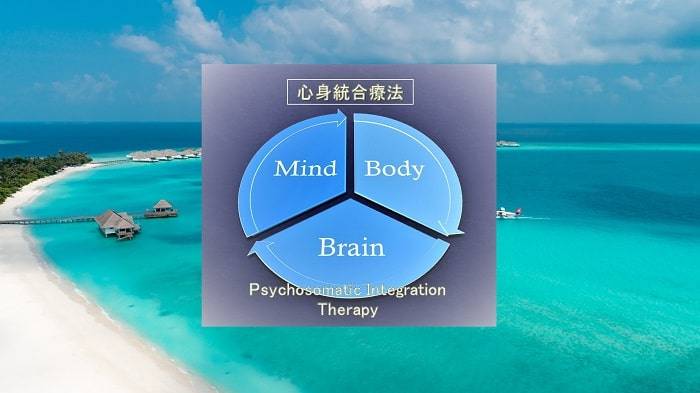
こちらの記事(腰痛&肩こりは癌の赤信号?)で数字のマジックに騙されてはいけないというお話をさせていただきました。そもそも確率や統計の考え方は、全ての医療において極めて重要かつ不可欠の視点です。
日本では、一般に医学は科学の象徴であるかのように思われています。しかし、医学の歴史を学ぶと、少し違った側面が見えてきます。
今から数十年前フィンランドの保健当局が、健診や健康指導にはどの程度の効果があるのかを調べるため、以下の実験を行いました。
まず心血管系疾患のリスク因子を持つ40歳から45歳までの管理職1200人を選びます。それをくじ引きで2つのグループに分け、片方の600人に対しては毎日の運動を指示し、喫煙、飲酒、糖分の摂取などを控えるよう指導し、健診や栄養学的な調査などを定期的に行い、必要に応じて投薬を行います。もう一方の600人に対してはいかなる健康管理も実施せずに放置しました。
この実験を15年間続けたのち、両方のグループを比較したところ、はっきりした違いが現れました。心臓や血管系の病気、死亡、自殺などの数において、一方のグループが少なかったのです。なんと、それは健康管理をしない人々でした。この事実に衝撃を受けた医師らは実験結果の公表を控えたそうです。
次に紹介するのは1970年代のイギリスでの話です。当時は手術不可能な肺がんの患者さんに対し、多種類の抗がん剤を少しずつ使う方法が専門医の間で広まっていました。副作用が少なく効果が高いと考えられていたからです。
あるとき、一部の研究者らがこの治療法の有効性を評価するため、次のような実験を行いました。同様の患者さん188人に対して、「抗がん剤を4種類使う」「1種類だけ使う」「使わない」の3つのグループに分けて治療し、その後の経過を比較したのです。
すると、驚いたことに治療成績がもっとも良かったのは抗がん剤を使わないグループであり、4種類使うグループは最低だったことが分かりました。
今日、医療は大きな転換期を迎えています。ヒトゲノム解析、ナノテクノロジーなど華々しい技術革新が進む一方、その裏では従来の医療方針を洗い直す地道な作業が進められています。

当たり前のように行われている検査の妥当性や治療の有効性を検証し直すプロジェクト、それがevidence-based medicine(根拠に基づく医療)、略してEBMです。
EBMでもっとも重視される実験形式は次のようなものです。
まず実験対象となる患者さんをできるだけ多く集め、それを無作為に二つに分けます(場合によっては性差、年齢、職業、家族歴などを均等に振り分けることで個体分布の偏りをなくします)。
そして片方のグループにはAという治療を、もう片方のグループにはBという治療をして、その後の経過を追跡します。
実験対象が投薬に関するものであれば、本物の薬と偽薬をそれぞれのグループに投与し、患者さん自身も担当医もどちらの薬が出されているのか知らされないまま行われます。最後に追跡調査の結果を両グループ間で比較し、医療統計学を駆使して効果を判定します。
こうした実験形式-比較試験-にはどのような意味が隠されているのでしょうか?
それはプレセボ(またはプラシーボ)効果を排除するためです。偽薬(ショ糖やでんぷんで作った効果のないタブレット)を飲んでも、症状が改善してしまうという“プラセボ効果(心理的な思い込みによって症状が改善する現象)”によるものなのか、それとも本当に薬の成分による効果なのか、それを見極めるための実験なのです。
一般に偽薬を飲んだグループにも4~6割程度回復する人が現れてしまうため、その改善率と本物の薬を飲んだグループの改善率を比較して、後者の数字が優位に上回っていることが判明すれば、そこではじめて『その薬の効果は本物だ』と判定されるわけです。
このような実験方法を無作為化比較試験(Randomized controlled trial:RCT)といいます。
EBMではひとつのテーマに沿って行われた世界中のRCTを第三者機関が収集分析し、その結果を発表するという手順を踏みます。そうした情報が定期的に更新され、インターネットや書籍などで公表されています。
そのデータをもとに各疾病のガイドラインを作成したり、現場の医師が治療方針を決めるのに役立てたりしているのです。EBMではRCTのほかに以下のような研究も行われています。
■ケースコントロール研究
疾患や病態が既に発生している患者さんのグループとそれらが発生していないグループにおいて、過去に遡って危険因子を比較するというもの。たとえば肺癌になったグループとそうでない人のグループにおいて、それまでの生活習慣(喫煙の有無や量・運動・食事など)における危険因子を比較する。
■コホート研究(前向き)
あらかじめ調べておいた「病気になる危険因子」の集団がその後どのようにして発症していくのかを観察するもの。たとえば、ヘビースモーカーの集団がどのようにして肺癌を発症していくのか、あるいは肥満の集団がどのようにして生活習慣病を発症していくのかを追跡調査する。
■コホート研究(後ろ向き)
既に病気を発症している集団が、それまでどのような状態(仕事・環境・栄養・運動)にあったのかを調査する。たとえば、脳卒中を起こした人々が過去にどんな生活を送っていたのかなど。
■横断的研究
たとえば腰痛と画像診断の関係を調べる際、腰痛の患者100人、健常者100人を集め、それぞれのレントゲン・CT・MRIの写真を比較し、その結果を分析する。
基本的にコホート研究は大規模な疫学調査(数万人~数十万人規模)で使われ、横断的研究は時間軸における定点観測あるいは短い期間でのデータ収集を基本とし、主に診断法に関して用いられます。
1990年代に発表された「腰痛の85%が原因不明である」という衝撃的なデータは、画像診断に関する横断的研究の成果として有名です。
ご参考までに、EBMによる医療の変革を知る上で、一番身近な例を紹介しておきます。「風邪と抗生物質の関係」です。抗生物質は細菌を殺す薬(抗菌薬)ですので、ウィルスには無効です。風邪の8~9割はウィルスが原因ですので、抗生物質は一般的な風邪には効きません。
それではなぜ風邪に処方されることが多いのか。日本では肺炎などの二次感染を防ぐ目的で使われています。ところが、EBMによって二次感染の予防効果はないことが判明したため、欧米では抗生物質が風邪に処方されることはありません。
日本においても日本呼吸器学会がEBMに基づくガイドラインを発表し、安易に抗生物質に頼ることを戒めています。
インフルエンザに関しても、パンデミックが予想されるような強力なものでなければ、ヨーロッパでは「自宅安静」が常識であり、医師から処方される抗ウィルス薬(たとえばタミフルなど)に頼ろうとする習慣はありません。
抗生物質の使用量が世界一と言われる日本…。
“抗生物質依存社会”を変える一番の方策は、私たちひとりひとりが真の健康のあり方を学ぶことで、免疫機能を強化する叡知-免疫細胞を活性化させる生活習慣-を身につけることではないでしょうか。
認知科学統合アプローチ(COSIA)に興味のある方へ
画像ラベリングと痛みの原因診断が乖離する現状において、世界疼痛学会(IASP)は痛みの定義を改訂し、「痛みの感情起源説」にシフトしています。
COSIAに興味のある方は是非一度「医療者・セラピスト専用サイト」にお越しください。貴殿のご参画をお待ちしております。


